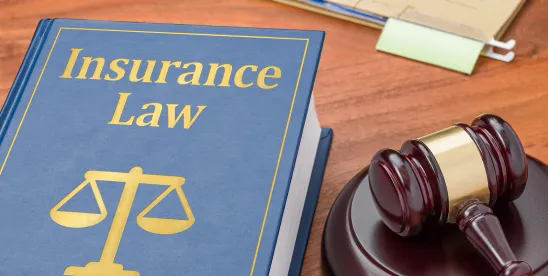What Is Replacement Cost Coverage?
Replacement cost coverage is the most common type of insurance found in first-party property insurance policies, including standard business property policies and builder’s risk policies (for property in the course of construction). It usually applies to both “building” coverage and to business personal property (BPP) coverage, with some exceptions. It is referred to as “new for old” because it pays to replace lost or damaged property with new property of the same type.
Insurance companies frequently argue that because they cover only loss or damage to covered property, policyholders must prove that a particular item of covered property was damaged before the insurance company has an obligation to repair or replace it. Insurance policies, however, rarely are specific on this point. In Windridge of Naperville Condo. Ass’n v. Philadelphia Indem. Ins. Co., 932 F.3d 1035, 1040 (7th Cir. 2019), for example, the court held that “the unit of covered property to consider under the policy (each panel of siding vs. each side vs. the buildings as a whole) is ambiguous.” Thus, the court construed the policy in favor of the policyholder under the well-settled rule that ambiguous language in an insurance policy must be construed in favor of coverage and strictly against the insurance company.
The Windridge court also examined the so-called “matching” issue that often arises with partial damage. Specifically, where new materials will not match the existing undamaged materials, does the insurer have an obligation to pay for changes in the undamaged portions of a building so that the new and old will match? The court noted that the case law is “mixed” in answering this question. The court followed the case law holding that the insurer must account for matching, noting that “buildings with mismatched siding are not a post-storm outcome that the insured was required to accept under this replacement-cost policy.” Id. at 1041.
What Is “Like Kind and Quality”?
“New for old” is usually not difficult when property is a total loss, but it becomes a challenge when property is only damaged or partly destroyed. It can often be difficult, if not impossible, to replace only part of a damaged structure. Issues like tying the new into the old, matching the new and the old, material and technology changes, and code requirements for new versus old often arise.
Most policies require replacement of lost or damaged property with property of “like kind and quality,” or similar words. The standard ISO form uses the phrases “comparable material and quality…used for the same purpose.” These words usually are not further defined.
As discussed above, several courts and/or state statutes provide that replacement materials must match the undamaged portions of the property to qualify as like kind or comparable. For other issues, whether replacement materials are “comparable” often involves expert testimony. In Republic Underwriters Ins. Co. v. Mex-Tex, Inc., 150 S.W.3d 423 (Tex. 2004), for example, the court held that “comparable” does not mean “identical” and affirmed the trial court’s ruling finding coverage for a different type of roof based on expert testimony that the replacement roof was comparable, even though it was different from the damaged roof and cost more to replace.
What if Building Codes Have Changed?
The standard ISO replacement cost form states that the “cost of building repairs or replacement does not include the increased cost attributable to enforcement of or compliance with any ordinance or law regulating the construction, use or repair of any property.” However, some coverage is available for “Increased Cost of Construction,” which includes coverage for the increased cost necessary to comply with the minimum costs of complying with building codes or ordinances, subject to certain conditions. This additional coverage also is sometimes referred to as “Ordinance or Law” coverage. It is limited to certain amounts in the standard ISO form ($10,000 or 5% of the applicable limit), but additional coverage can be purchased.
How Is My Value Determined?
At a high level, replacement cost valuation is straightforward — it is cost to repair or replace the lost or damaged property with comparable property. The standard ISO form limits recovery to the maximum of “the amount actually spent that is necessary to repair or replace the lost or damaged property.” But the total replacement cost can be affected by the issues discussed above (e.g., matching or whether the replacement property is “comparable”), as well as a host of other issues.
The number of factors that can affect replacement cost vary based on the type and age of construction, materials, geography, and macroeconomic events like weather, tariffs and the labor market. These factors affect things like:
- The availability of replacement materials
- The cost of replacement materials
- Alternatives to the damaged property
- Lead times for materials
- Labor rates and intensity of different repair options
- Market or aesthetic changes
- The schedule for repairs or replacement
Most insurance companies and their experts use software programs to calculate replacement costs. These programs contain regularly updated labor and materials costs by geographical regions. In calculating replacement cost estimates, they also consider additional costs, such as overhead, profit, permitting, and other costs that may be included in a general contractor’s “general conditions.”
While these programs are the insurance industry’s standard for calculating replacement cost, they are the map and not the territory. Nothing in the policy requires the use of estimates to calculate replacement cost, and recovery ultimately is based on the actual costs of repairs or replacement, subject to the policy’s terms and conditions, such as those discussed above.
Contractors and builders generally do not use the same programs that insurance companies use — they base their cost estimates on sub-contractor bids and their general knowledge about the costs and time involved in a potential job. In tight labor markets or times of rapidly rising or fluctuating prices, the replacement cost estimates in an insurance company’s software program may not reflect the events on the ground.
The numbers in the estimating software used by insurance companies also necessarily reflect figures among a range of possible costs a policyholder might receive from a contractor in an estimate for actual repair or replacement work. The costs of the most available or desirable contractor may be higher than the cost reflected in an insurance company’s insurance program. In addition, the accuracy of an estimate will only be as good as the information entered into the program. If the details of the loss are entered incorrectly, or if the scope changes as additional work becomes necessary or additional damage is uncovered during demolition, the estimate will need to be corrected or updated.
Policyholders should not accept software driven estimates as final costs, but as useful tools for receiving early partial payments on a claim and for setting a general framework for replacement costs. Policyholders should not settle claims until after they fully understand the scope of their loss and the actual costs they will incur in repairing or replacing damaged or destroyed property.
Do I Get Replacement Cost if I Don’t Rebuild or Rebuild Something Different?
Many policy forms state that the insurer will pay only the “actual cash value” or “ACV” of property damage until after repairs are made. Some courts have held that this condition may be waived by an insurer’s handling of a claim. In Rockford Mut. Ins. Co. v. Pirtle, 911 N.E.2d 60 (Ind. Ct. App. 2009), for example, the court held that this condition was waived where the insurer waited six months and until after foreclosure proceedings were initiated to offer an ACV payment.
Most insurers define ACV as replacement cost less depreciation, and some policies define the term in this way. But many policies do not define ACV. In the absence of a policy definition of ACV, or where the policy language allows, many states use the “broad evidence rule” for calculating ACV. This rule is a “flexible rule” that permits consideration of “any relevant factor” in determining ACV. Travelers Indem. Co. v. Armstrong, 442 N.E.2d 349, 356 (Ind. 1982).
Some policies allow recovery of replacement cost where the policyholder rebuilds at another location, or even if the policyholder rebuilds something different from the damaged or destroyed property. Other policies go so far as to allow a replacement cost recovery where the policyholder does not rebuild, if the proceeds are used elsewhere in the policyholder’s business. These provisions often also require that the proceeds are used on unplanned expenses. In these situations, disputes center on the “hypothetical” replacement cost of repairing or rebuilding with like kind or comparable property, given that no actual costs are incurred for that work.
Who Decides What I Get?
There are three ways disputes over replacement cost may be decided. If the dispute involves a question of what the insurance policy language means, then the issue is usually decided by a court. But courts only decide what the law mandates or what the insurance policy language means. Juries typically decide factual disputes or issues that turn on experts’ credibility.
In the case of disputes over the amount of replacement cost, property insurance policies usually contain a third remedy, called appraisal. The appraisal process involves each side choosing an appraiser and those appraisers choosing an umpire. The appraisers and the umpire then evaluate the differences in replacement cost calculations and the umpire’s agreement with one of the party’s appraisers is binding. Appraisals too can be fraught with issues, which is discussed in a prior article linked here.
Conclusion
Disputes over replacement cost raise legal and factual issues in normal times, but they present enhanced challenges when costs, climate, and market forces are changing and uncertain. Policyholders should navigate those challenges thoughtfully to ensure they obtain the benefits they paid for under their property insurance policies.




 />i
/>i

